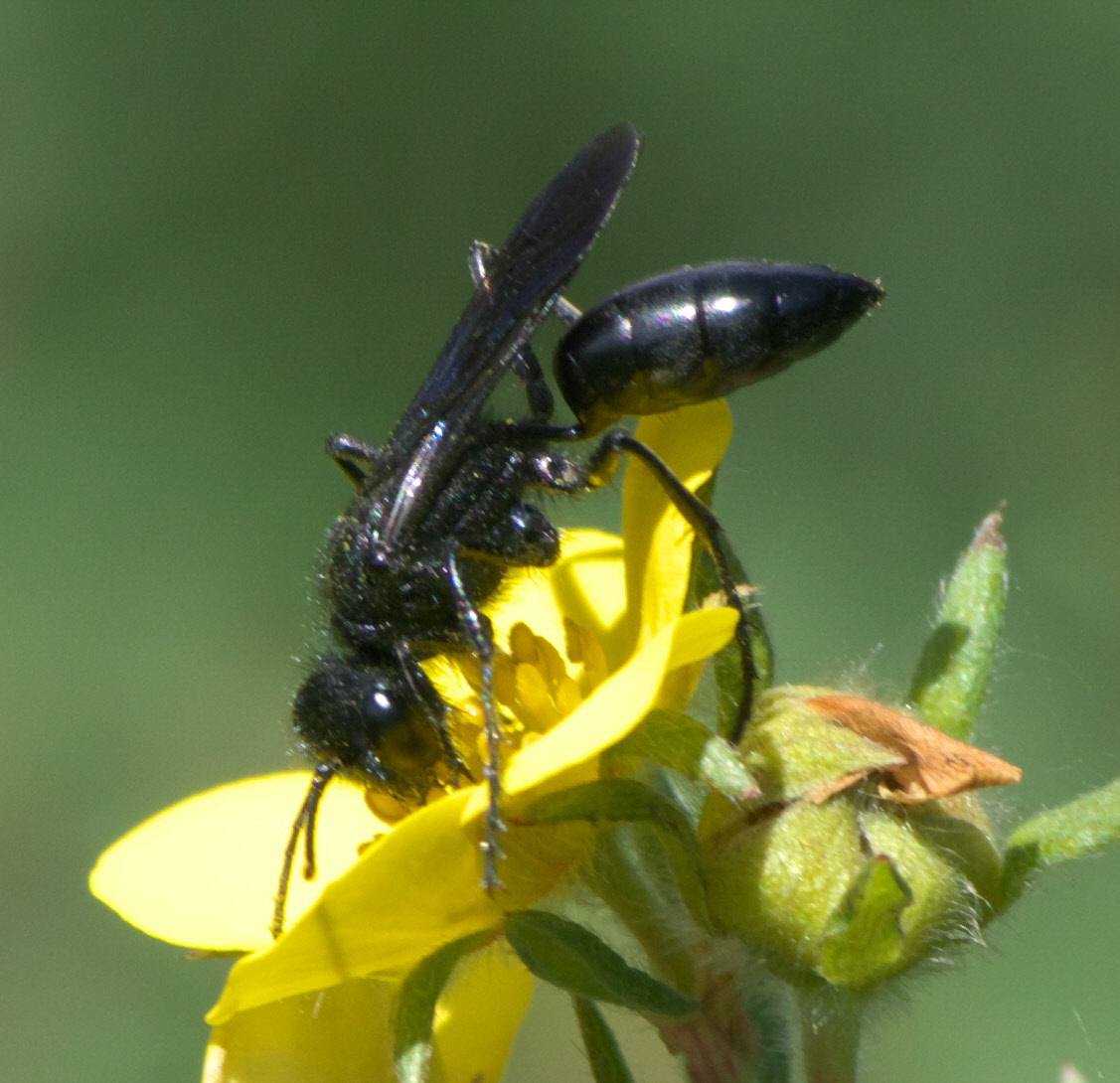|
Jacobus Van Der Vecht
Jacobus van der Vecht (5 July 1906 – 15 March 1992), nicknamed Jaap, was a Dutch entomologist who specialised in Hymenoptera, especially those of the East Indies and New Guinea. Early life Van der Vecht was born in The Hague on 5 July 1906. His father, the Master of the Wine Cellars at the court of the then Queen Dowager of the Netherlands, Emma of Waldeck and Pyrmont, had an interest in natural history and reared butterflies as a hobby. He enjoyed taking his sons on walks to study nature and this encouraged a passion for biology in Jacobus. Van der Vecht left school in The Hague and enrolled to study Biology at the ''Leiden University, Rijksuniversiteit Leiden''. Here he began to study the Aculeata, Aculeate Hymenoptera especially the taxonomy of bees, concentrating on the large mining bee genus ''Andrena'' and the wasps in the family Sphecidae. He graduated with a master's degree in 1928. Career After graduating Van der Vecht took a position in the Dutch East Indies at the ... [...More Info...] [...Related Items...] OR: [Wikipedia] [Google] [Baidu] |
The Hague
The Hague ( ; nl, Den Haag or ) is a city and municipality of the Netherlands, situated on the west coast facing the North Sea. The Hague is the country's administrative centre and its seat of government, and while the official capital of the Netherlands is Amsterdam, The Hague has been described as the country's de facto capital. The Hague is also the capital of the province of South Holland, and the city hosts both the International Court of Justice and the International Criminal Court. With a population of over half a million, it is the third-largest city in the Netherlands, after Amsterdam and Rotterdam. The Hague is the core municipality of the Greater The Hague urban area, which comprises the city itself and its suburban municipalities, containing over 800,000 people, making it the third-largest urban area in the Netherlands, again after the urban areas of Amsterdam and Rotterdam. The Rotterdam–The Hague metropolitan area, with a population of approximately 2.6&n ... [...More Info...] [...Related Items...] OR: [Wikipedia] [Google] [Baidu] |
Sphecidae
The Sphecidae are a cosmopolitan family of wasps of the suborder Apocrita that includes sand wasps, mud daubers, and other thread-waisted wasps. The name Sphecidae was formerly given to a much larger grouping of wasps. This was found to be paraphyletic, so most of the old subfamilies have been moved to the Crabronidae. Biology The biology of the Sphecidae, even under the restricted definition, is still fairly diverse; some sceliphrines even display rudimentary forms of sociality, and some sphecines rear multiple larvae in a single large brood cell. Many nest in pre-existing cavities, or dig simple burrows in the soil, but some species construct free-standing nests of mud and even (in one genus) resin. All are predatory and parasitoidal, but the type of prey ranges from spiders to various dictyopterans, orthopteroids and larvae of either Lepidoptera or other Hymenoptera; the vast majority practice mass provisioning, providing all the prey items prior to laying the egg. Phylo ... [...More Info...] [...Related Items...] OR: [Wikipedia] [Google] [Baidu] |
Madura
Madura Island is an Indonesian island off the northeastern coast of Java. The island comprises an area of approximately (administratively 5,379.33 km2 including various smaller islands to the east, southeast and north that are administratively part of Madura's four regencies). Administratively, Madura is part of the province of East Java. It is separated from Java by the narrow Madura Strait. The administered area has a density of 744 people per km2 while main island has a somewhat higher figure of 826 per km2 in 2020. Etymology The name of Madura island is of Hindu origin. The origin of the island's name lies in the legend that the island is in the realm of Hindu deity Baladewa. The name ''Madura'' itself is derived from the word ''"Mathura"'' - a word in Indian-origin language Sanskrit for the native home of Baladewa "Baladeva". The corrupted form of Sanskrit word ''Mathura'' became the ''Madura''.Ed. Emma Helen Blair and James Alexander Robertson, 1903-09The Philip ... [...More Info...] [...Related Items...] OR: [Wikipedia] [Google] [Baidu] |
Japanese Occupation Of The Dutch East Indies
The Empire of Japan occupied the Dutch East Indies (now Indonesia) during World War II from March 1942 until after the end of the war in September 1945. It was one of the most crucial and important periods in modern Indonesian history. In May 1940, Germany occupied the Netherlands, and martial law was declared in the Dutch East Indies. Following the failure of negotiations between the Dutch authorities and the Japanese, Japanese assets in the archipelago were frozen. The Dutch declared war on Japan following the 7 December 1941 Attack on Pearl Harbor. The Japanese invasion of the Dutch East Indies began on 10 January 1942, and the Imperial Japanese Army overran the entire colony in less than three months. The Dutch surrendered on 8 March. Initially, most Indonesians welcomed the Japanese as liberators from their Dutch colonial masters. The sentiment changed, however, as between 4 and 10 million Indonesians were recruited as forced labourers ('' romusha'') on economic deve ... [...More Info...] [...Related Items...] OR: [Wikipedia] [Google] [Baidu] |
Artona Catoxantha
''Palmartona'' is a genus of moths in the family Zygaenidae. It contains only one species, ''Palmartona catoxantha'', which is found from Myanmar eastwards throughout Malaysia, Singapore, Indonesia (Sumatra, Nias, Java, Bangka, Kalimantan, Sulawesi), the Philippines (Palawan) to Papua New Guinea. There is one record for Australia (Queensland). The length of the forewings is 6-7.5 mm for males and 6.5–8 mm for females. The upperside of forewings and hindwings is dark brown, the hindwing with a yellow costal margin. The underside of both wings is light grey-brown with yellow scales along the costa and a yellow mark before the apex on the forewing and two parallel yellow stripes on the hindwing anteriorly. The larvae feed on '' Cocos nucifera'', ''Metroxylon'' and ''Livistona'' species. ''Musa'' and even Poaceae Poaceae () or Gramineae () is a large and nearly ubiquitous family of monocotyledonous flowering plants commonly known as grasses. It includes the cereal ... [...More Info...] [...Related Items...] OR: [Wikipedia] [Google] [Baidu] |
Hemiptera
Hemiptera (; ) is an order (biology), order of insects, commonly called true bugs, comprising over 80,000 species within groups such as the cicadas, aphids, planthoppers, leafhoppers, Reduviidae, assassin bugs, Cimex, bed bugs, and shield bugs. They range in size from to around , and share a common arrangement of piercing-sucking Insect mouthparts, mouthparts. The name "true bugs" is often limited to the suborder Heteroptera. Entomologists reserve the term ''bug'' for Hemiptera or Heteroptera,Gilbert Waldbauer. ''The Handy Bug Answer Book.'' Visible Ink, 1998p. 1. which does not include other arthropods or insects of other orders such as Ant, ants, Bee, bees, Beetle, beetles, or Butterfly, butterflies. In some variations of English, all Terrestrial animal, terrestrial arthropods (including non-insect arachnids, and myriapods) also fall under the Colloquialism, colloquial understanding of ''bug''. Many insects with "bug" in their common name, especially in American English, belo ... [...More Info...] [...Related Items...] OR: [Wikipedia] [Google] [Baidu] |
Pompilidae
Wasps in the family Pompilidae are commonly called spider wasps, spider-hunting wasps, or pompilid wasps. The family is cosmopolitan, with some 5,000 species in six subfamilies. Nearly all species are solitary (with the exception of some group-nesting Ageniellini), and most capture and paralyze prey, though members of the subfamily Ceropalinae are kleptoparasites of other pompilids, or ectoparasitoids of living spiders. In South America, species may be referred to colloquially as or , though these names can be generally applied to any very large stinging wasps. Furthermore, in some parts of Venezuela and Colombia, it is called , or "horse killers", while in Brazil some particular bigger and brighter species of the general kind might be called /, or "throat locker". Morphology Like other strong fliers, pompilids have a thorax modified for efficient flight. The metathorax is solidly fused to the pronotum and mesothorax; moreover, the prothorax is best developed in Pompilidae a ... [...More Info...] [...Related Items...] OR: [Wikipedia] [Google] [Baidu] |
Sapygidae
The Sapygidae are a family of solitary kleptoparasitic aculeate wasps. They are generally black wasps, similar in appearance to some Tiphiidae or Thynnidae, with white or yellow markings developed to various degrees. The female oviposits her eggs into the nests of solitary bees, and the developing larvae consume both the host larvae and the supply of food provided for them. The Sapygidae are a small family with only about 80 species described, and they are not of major economic importance. However, some of their host species are important pollinators, and it may sometimes be necessary to control the level of predation on them. Fossil sapygids have been found in mid-Cretaceous amber in Myanmar and Upper Eocene Baltic amber Amber is fossilized tree resin that has been appreciated for its color and natural beauty since Neolithic times. Much valued from antiquity to the present as a gemstone, amber is made into a variety of decorative objects."Amber" (2004). In .... Fil ... [...More Info...] [...Related Items...] OR: [Wikipedia] [Google] [Baidu] |
Apidae
Apidae is the largest family within the superfamily Apoidea, containing at least 5700 species of bees. The family includes some of the most commonly seen bees, including bumblebees and honey bees, but also includes stingless bees (also used for honey production), carpenter bees, orchid bees, cuckoo bees, and a number of other less widely known groups. Taxonomy In addition to its historical classification (honey bees, bumble bees, stingless bees and orchid bees), the family Apidae presently includes all the genera formerly placed in the families Anthophoridae and Ctenoplectridae. Although the most visible members of Apidae are social, the vast majority of apid bees are solitary, including a number of cleptoparasitic species. The old family Apidae contained four tribes (Apinae: Apini, Euglossini and Bombinae: Bombini, Meliponini) which have been reclassified as tribes of the subfamily Apinae, along with all of the former tribes and subfamilies of Anthophoridae and the former f ... [...More Info...] [...Related Items...] OR: [Wikipedia] [Google] [Baidu] |
Vespidae
The Vespidae are a large (nearly 5000 species), diverse, cosmopolitan family of wasps, including nearly all the known eusocial wasps (such as ''Polistes fuscatus'', ''Vespa orientalis'', and ''Vespula germanica'') and many solitary wasps. Each social wasp colony includes a queen and a number of female workers with varying degrees of sterility relative to the queen. In temperate social species, colonies usually last only one year, dying at the onset of winter. New queens and males (drones) are produced towards the end of the summer, and after mating, the queens hibernate over winter in cracks or other sheltered locations. The nests of most species are constructed out of mud, but polistines and vespines use plant fibers, chewed to form a sort of paper (also true of some stenogastrines). Many species are pollen vectors contributing to the pollination of several plants, being potential or even effective pollinators, while others are notable predators of pest insect species. The sub ... [...More Info...] [...Related Items...] OR: [Wikipedia] [Google] [Baidu] |
Trigonalidae
Trigonalidae (the spelling Trigonalyidae is incorrect under Article 29.5 of the ICZN,ICZN Code 29.5. Maintenance of current spellings. If a spelling of a family-group name was not formed in accordance with Article 29.3 but is in prevailing usage, that spelling is to be maintained, whether or not it is the original spelling and whether or not its derivation from the name of the type genus is in accordance with the grammatical procedures in Articles 29.3.1 and 29.3.2. also historically sometimes spelled Trigonaloidae, based on an unjustified emendation) is one of the more unusual families of n s, of ind ... [...More Info...] [...Related Items...] OR: [Wikipedia] [Google] [Baidu] |







